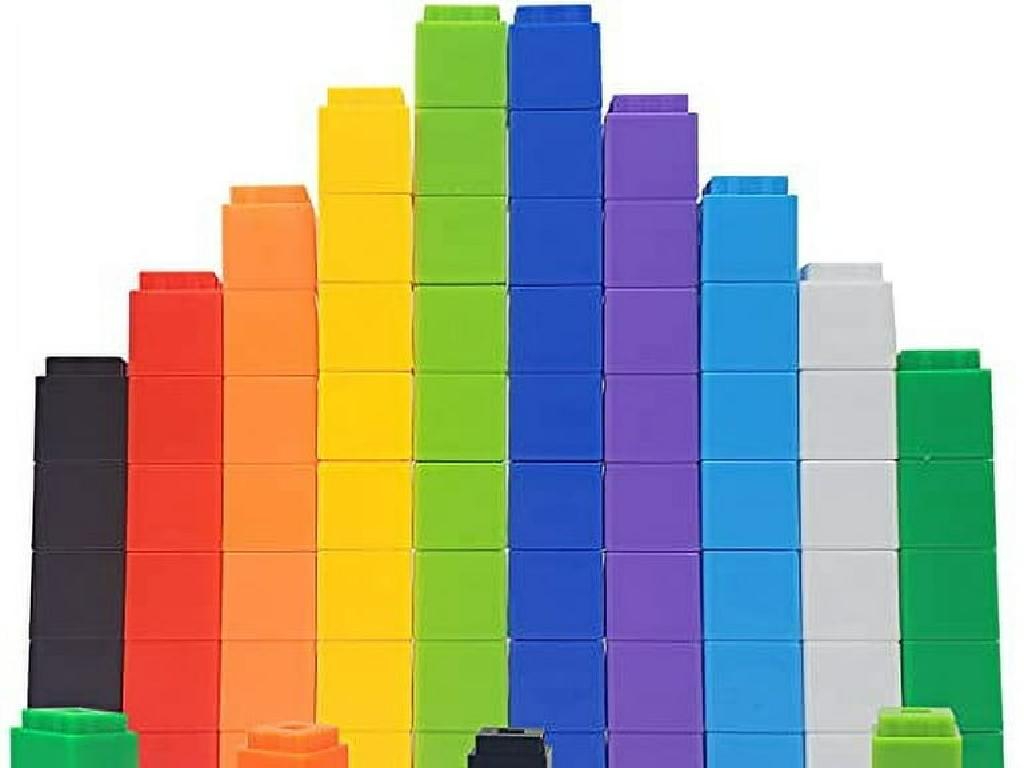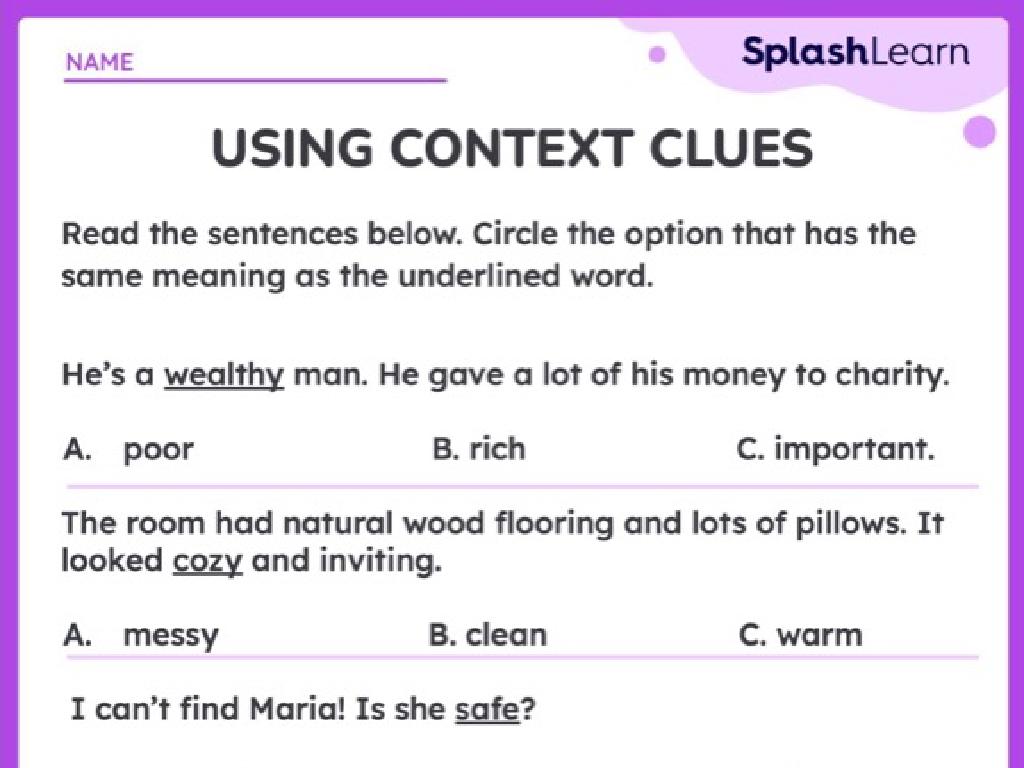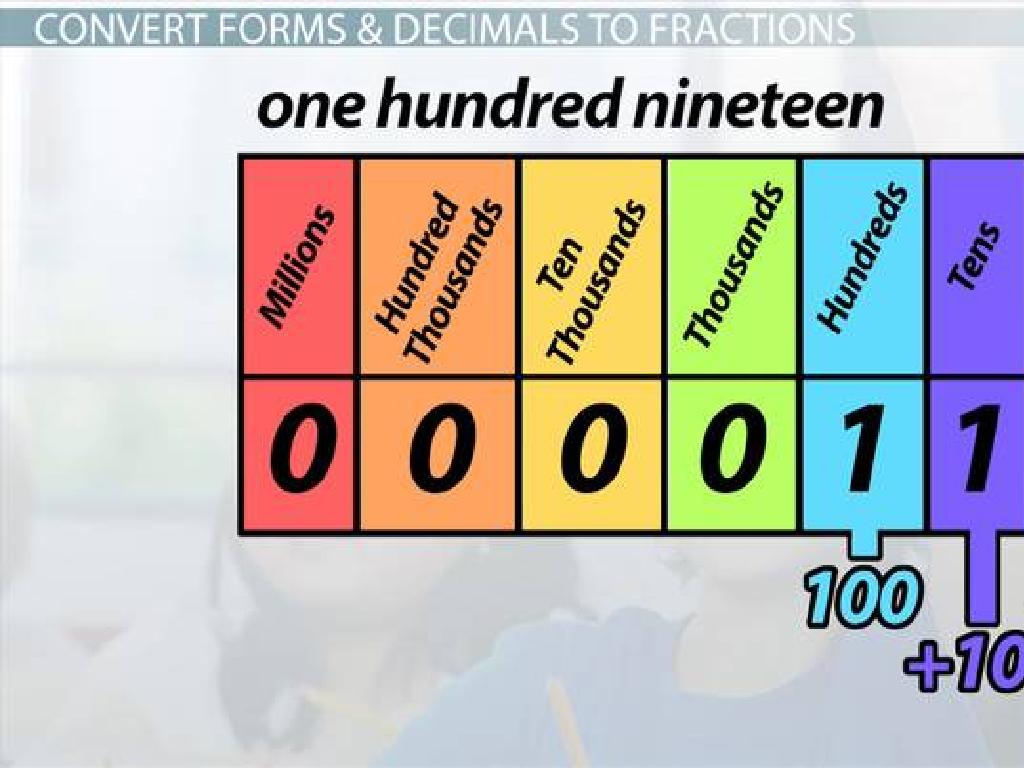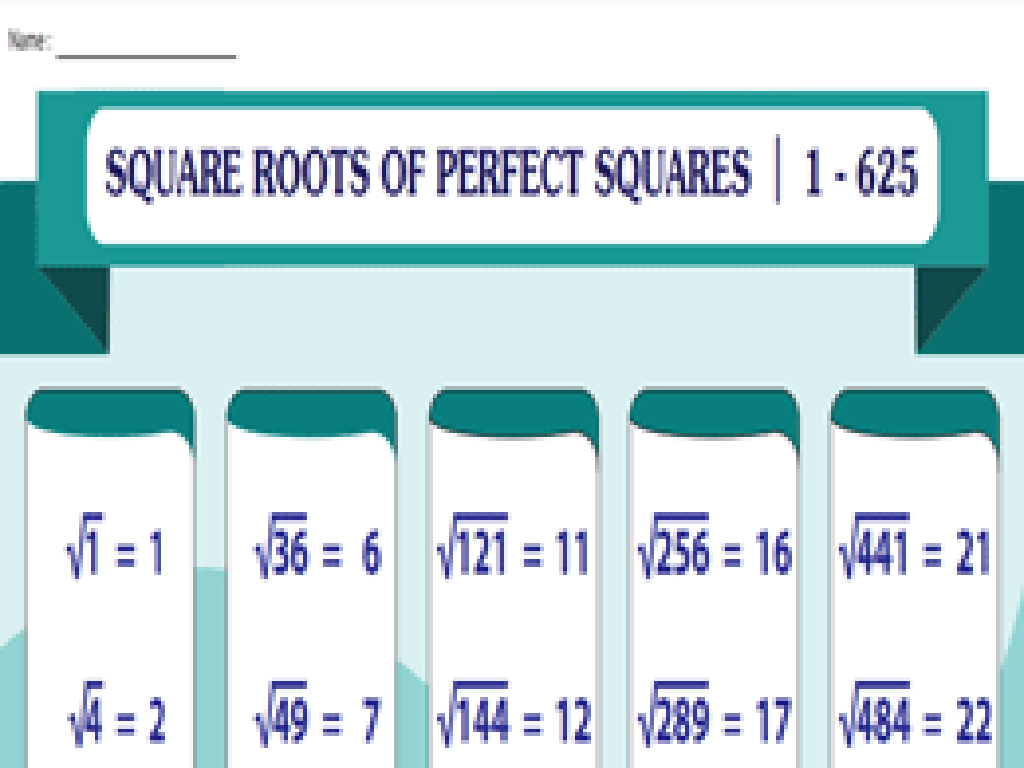Long And Short
Subject: Math
Grade: Pre-k
Topic: Size
Please LOG IN to download the presentation. Access is available to registered users only.
View More Content
Exploring Sizes: Long and Short
– Greet our young mathematicians
– Today’s focus: Learning about sizes
– Understanding ‘long’ and ‘short’
– ‘Long’ means something has a great length
– Identifying long and short objects
– For example, a pencil is shorter than a broom
|
Begin the class with a warm welcome to set a friendly atmosphere. Introduce the concept of sizes by explaining that objects can be big or small, and specifically focus on the length of objects, using terms ‘long’ and ‘short’. Use tangible examples that children are familiar with, such as comparing the length of a pencil to a broom. Encourage the children to look around their environment and identify objects that are long or short. This will help them understand the concept of size comparison in a practical and engaging way. Prepare to have objects of varying lengths available for the children to interact with and learn from.
Exploring Size: Long and Short
– Understanding size in objects
– Size measures how big or small things are.
– Comparing lengths of items
– Use objects like pencils or strings to compare.
– Examples of long and short
– A pencil is longer than a paperclip. A worm is shorter than a snake.
– Interactive learning
|
This slide introduces the concept of size, specifically focusing on the attributes of ‘long’ and ‘short.’ Begin by explaining that size helps us understand the dimensions of objects around us. Use relatable items to demonstrate how to compare lengths, such as comparing the length of a pencil to a paperclip. Provide clear examples by showing objects that are easily recognizable to Pre-K students, and encourage them to participate by choosing objects from the classroom to compare. The interactive part of the lesson should involve hands-on activities where students can physically measure and compare objects, fostering an engaging and tactile learning experience.
Exploring Long and Short
– Long things are greater in length
– Short things are smaller in length
– Identify long and short objects
– Think of things like pencils vs crayons
– Class activity: Long vs Short
– Bring an object and we’ll compare!
|
This slide introduces the concept of long and short as measurements of length in a way that is understandable for Pre-K students. Start by explaining that ‘long’ means something has a greater length from one end to the other, like a jump rope. ‘Short’ means something has a smaller length, like a paperclip. Ask the students to identify objects around the classroom or at home that are long and short. For the class activity, encourage students to bring an object from home and the class will discuss if it’s long or short and why. This activity will help solidify their understanding of the concept by comparing objects directly. Provide guidance and ensure that each child participates and understands the difference between long and short.
Let’s Compare: Long and Short
– Measure with hands or paper clips
– Use hands or clips to find out which is longer
– Compare: longer vs shorter
– Look at two objects and decide which one stretches out more
– Practice with pencils and erasers
– Take your pencil and eraser, which one is longer?
– Understanding size differences
|
This slide introduces the concept of comparing lengths using familiar objects. Encourage the children to use their hands or paper clips as informal units of measure to determine which objects are longer or shorter. Start with a demonstration, comparing two objects of different lengths. Then, have the children practice by comparing their own pencils and erasers. This activity will help them visually and physically understand the concept of size and length. Make sure to walk around the classroom to assist and praise the children as they explore and learn.
Long and Short in Nature
– Animals have different sizes
– Compare a snake and a snail
– A snake stretches out long, a snail is small and short
– Think of other long or short animals
– Use your imagination or look outside
– Share your examples in class
– We’ll discuss as a group next time!
|
This slide is aimed at helping Pre-K students understand the concept of long and short by using relatable examples from nature. Start by explaining that animals come in various sizes. Use the comparison between a snake and a snail to illustrate the difference between long and short. Encourage the children to think of other animals that are long or short and to observe their surroundings for more examples. During the next class, create an interactive session where the students can share the examples they’ve thought of or found, fostering a discussion that will help solidify their understanding of the concepts of long and short.
Class Activity Time: Long and Short Game
– Let’s play ‘Long and Short’ game!
– Find classroom items to measure
– Look for pencils, books, or strings
– Are they long or short?
– Use words ‘long’ or ‘short’ to describe
– Measure with hands with a friend
– Practice estimating length together
|
This interactive activity is designed to help Pre-K students understand the concept of length by comparing objects. Encourage the children to work in pairs to find various items around the classroom such as pencils, markers, strings, or blocks. They should use their hands to measure the length of each item and decide if it is long or short. This will help them develop their estimation skills and understand the use of non-standard units of measurement. Provide guidance on how to use their hands for measuring and ensure they take turns. After the activity, discuss the findings as a class and reinforce the vocabulary by asking students to describe the length of objects they measured.
Show and Tell: Long vs. Short
– Show your long and short items
– Explain why they are long or short
– Use words like ‘taller’, ‘bigger’, ‘smaller’, ‘shorter’
– Listen to friends’ explanations
– Understand long and short
– Comparing items helps us learn size differences
|
This slide is for a class activity where students will engage in a show and tell to demonstrate their understanding of the concepts of long and short. Each student will present the items they have found and explain why they think each item is long or short. Encourage them to use descriptive words related to size, such as ‘taller’, ‘bigger’, ‘smaller’, and ‘shorter’. As students present, the rest of the class should listen and learn from their peers’ explanations. This activity will help reinforce the concept of comparing lengths and understanding size differences. For the teacher: Prepare to guide the students in their explanations and ensure that each child gets a turn to present. Have a list of size-related words on the board for reference.
Great Job on Learning Long and Short!
– You learned about long and short
– Size describes things around us
– Great work today, everyone!
– Excited for more Math fun next time!
|
This slide is a positive reinforcement for the Pre-K class, congratulating them on their understanding of the concepts of long and short. It’s important to remind them that size is a property that helps us describe and compare different objects in our environment. Encourage the children by acknowledging their effort and participation in today’s lesson. End the class on a high note, building anticipation for the next lesson to keep them excited about learning more math concepts.






